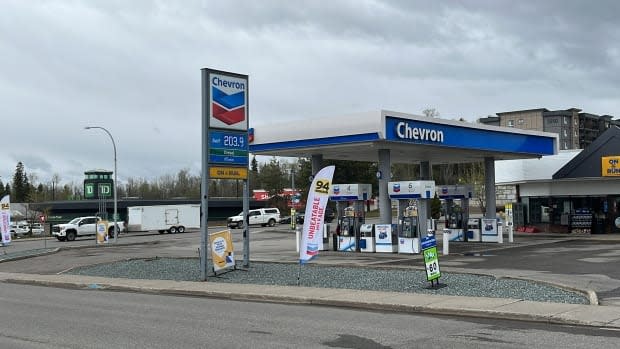B.C. workers who use their vehicle on the job say gas reimbursements not keeping up with soaring prices

Jacquie Woolley drives more than 50 kilometres a day for her job as a mail carrier for Canada Post in the northern B.C. city of Prince George.
Woolley says she used to spend $65 per week on gas for work. Now, she spends $115 a week — but the amount she is reimbursed has remained the same.
"I'm paying to do my job right now," she said.
Woolley is one of many British Columbians grappling with soaring gas prices, which have hovered around $2 per litre in most places in the province, while using their own vehicle for work.
Every year, the Canada Revenue Agency (CRA) sets a federal mileage rate, or a standard per-kilometre allowance for employees who drive their own vehicle as part of their job. The 2022 mileage rate is set at $0.61/km for the first 5,000 kilometres driven, then drops down to $0.55/km thereafter.
For Woolley, this means she pays $45 to $65 a week out of pocket on top of her vehicle allowance to complete deliveries.
It's changed her life in many ways, she says.
Woolley, who has been a Canada Post mail carrier for 21 years, says she and her husband have cut back on groceries, no longer go on weekly date nights, and will not be able to travel this summer.

If nothing changes, Woolley says she will have to make do with the lifestyle changes until she can officially retire in eight years.
"If it means we're eating macaroni and cheese for the next eight years, I guess that's what we're eating," she said.
She hopes the government will increase the mileage rate in light of rising gas prices, or at least offer affected employees a tax break.
"Something's gotta give somewhere, and it can't always be us."
Temporarily raising mileage rates
Postal workers across B.C. are taking a hit, says Coleen Jones, Pacific region director at the Canadian Union of Postal Workers (CUPW).
In northern communities, Jones says, some have to drive upwards of 175 kilometres a day to deliver mail.
"[Postal workers] are now subsidising the companies that they work for," she said.
Gas reimbursements made to employees at the standard mileage rate are not taxed. Employers may choose to provide a different rate for workers, but if they do, those payments are considered taxable income by the government.
"Even if the companies did pay them more, then that vehicle allowance completely becomes taxable — even the stuff that is below the 61 cents," Jones said.
The union is petitioning the CRA to temporarily raise mileage rates by at least 15 per cent until the average price of gas drops below $1.75 per litre.
The CRA did not respond to CBC's request for comment.
Other sectors affected
The mileage rate has also affected employees in others sectors.
Stephanie Smith, president of the B.C. Government Employees Union (BCGEU) says thousands of their members use their own personal vehicles as part of their job, including community health and social service workers.
"Right now the [mileage rate] doesn't come anywhere near meeting the cost, so our workers are paying to go to work," she said.
Even in denser areas such as the Lower Mainland, where driving distances may be shorter, community health workers still need to drive up to 100 to 200 kilometres a week to carry out their job, she adds.
"Working people should not be paying to go to work, and we need government to find a solution for workers."

